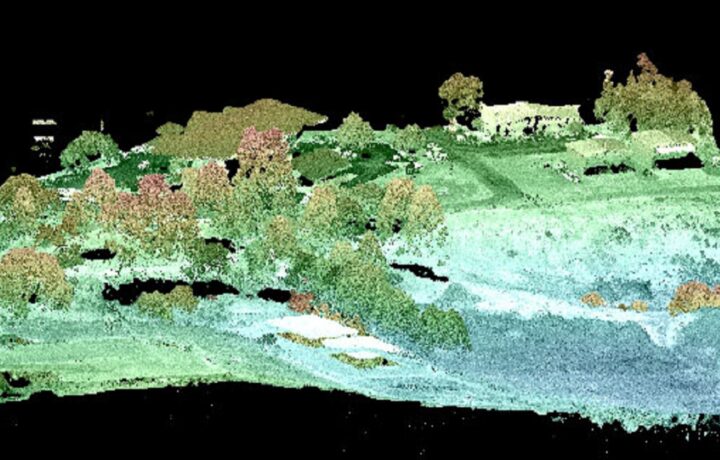Only a select few humans have been fortunate to view the Earth from space, but what they can see is actually fairly limited. This is where a hyperspectral imager can come into play, as it can provide a detailed image that can spot things that the naked eye would miss.
That could be an area where trees are growing at different rates or a plot of under-utilized fertile land. The imagers can also spot vehicles hidden by camouflage, be used to identify ships at sea, and even chemicals on the ground. Hyperspectral imaging is able to collect and process information from across the electromagnetic spectrum, whereas the human eye can only see the color of visible light in mostly three bands – including long wavelengths that are perceived as red, medium wavelengths perceived as green, and short wavelengths perceived as blue – spectral imaging divides the spectrum into many more bands.
More importantly, the technique of dividing images into bands can be extended beyond the visible. Since hyperspectral imaging collects many different colors of light, any given object will have its own unique signature. This could enable users of hyperspectral imagers to obtain information about each pixel in an image, and aid in identifying objects and materials.
Hyperspectral imagery has a diverse set of applications including agriculture, mining, geology, and intelligence and surveillance.
The NRO and Hyperspectral Imaging
The National Reconnaissance Office (NRO) announced plans in November to expand the agency’s use of commercial hyperspectral imaging. The NRO, which builds and operates observation satellites for the United States government, released a solicitation that called for off-the-shelf solutions to support demonstrations and studies to help determine how it could employ hyperspectral imaging in the future.
Last month the NRO awarded of six study contracts for commercial hyperspectral imagery (HSI). The companies that received the awards under NRO’s Strategic Commercial Enhancement’s (SCE) Broad Agency Announcement (BAA) Framework include BlackSky Technology, HyperSat, Orbital Sidekick, Pixxel, Planet, and Xplore.
“We are operating the largest, most diverse, most capable overhead constellation in NRO’s history as we face increasingly complex threats in space and on the ground,” said NRO Director Dr. Chris Scolese. “Through these newest contracts, we are very excited to explore the potential of commercial hyperspectral imagery and what it may be able to contribute to our world-class intelligence, surveillance, and reconnaissance capabilities.”
The commercial hyperspectral capabilities contracts are focused on increasing knowledge and understanding of current and expected hyperspectral imagery availability, quality, and operational utility through a two-stage effort.
According to the NRO, the first stage focuses on analytical studies to provide estimates of system capabilities at the individual sensor and constellation levels, as well as business and cybersecurity planning; while the second stage focuses on assessing on-orbit capabilities and procuring data products.
“In just over four months from RFP release to award, these contracts demonstrate our continued commitment to agile acquisition,” said Pete Muend, director of the NRO’s commercial systems program office. “Speed remains vital to take advantage of the innovation coming from industry, and to assess emerging technologies such as HSI and the potential to address intelligence challenges.”
Efforts Down Under – Beyond the Five Eyes
The United States is not alone in developing this technology. Close U.S. ally Australia has announced its intention to build space capabilities to support the joint AUKUS submarine program – which is part of a trilateral security pact between Washington, London, and Canberra to develop a new class of nuclear-powered submarines for the Royal Australian Navy.
The pact is focused on military capability and is separate from the Five Eyes intelligence-sharing alliance that also include New Zealand and Canada. It also includes cooperation on advanced cyber mechanisms, artificial intelligence and autonomy, quantum technologies, undersea capabilities, hypersonic and counter-hypersonic, electronic warfare, innovation, and information sharing.
Advances in hyperspectral imaging could also come from the AUKUS pact.
Australia is already set to launch its first satellite this year, and it will include a hyperspectral imaging payload, to support the AUKUS program. In addition Metaspectral, a Canadian/Australian company that develops remote sensing software to compress, transmit and analyze hyperspectral imagery in real-time using artificial intelligence, will provide support for the program. Its technology is also planned for deployment on the International Space Station (ISS) to demonstrate real-time compression and streaming of hyperspectral data from space.




